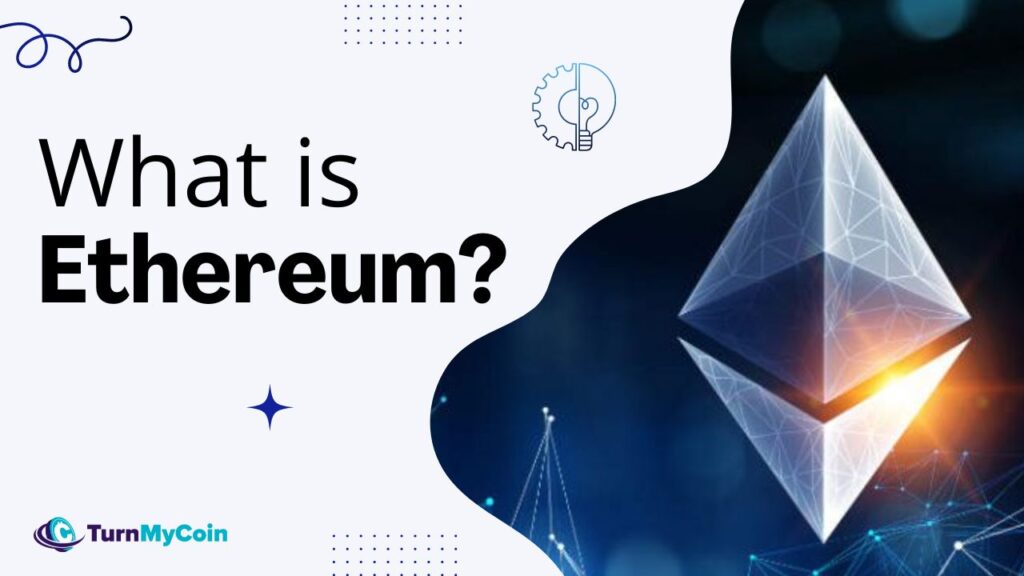Last updated on May 21st, 2024 at 12:11 pm
Introduction
For someone new to the cryptocurrency space, that’s the logical question to ask, given that they probably see Ethereum and its native Ether (ETH) cryptocurrency next to Bitcoin everywhere on exchanges and in the news. If Bitcoin (BTC) is allegedly the future of money, then what is Ethereum Blockchain?
However, putting Ethereum in direct competition with Bitcoin would not be fair. It has different objectives, characteristics, and even technology.
With Ethereum Blockchain, users can conduct transactions, stake their holdings to earn interest, use and store nonfungible tokens (NFTs), trade cryptocurrencies, play games, access social media, and much more. Ether is the native token to the Ethereum Blockchain.
Ethereum is often considered as the next big thing of the internet. Web 3.0 is a decentralized, user-powered network, unlike centralized platforms like Apple’s App Store. Decentralized applications (DApps), decentralized finance (DeFi), and decentralized exchanges (DEXs), for example, supports by this “next-generation web”.
This guide will give details on Ethereum’s history, mining, how it functions, how to buy it, how it compares to Bitcoin, how it works, what it can do for you, and a sneak peek at Ethereum 2.0.
Ethereum’s History
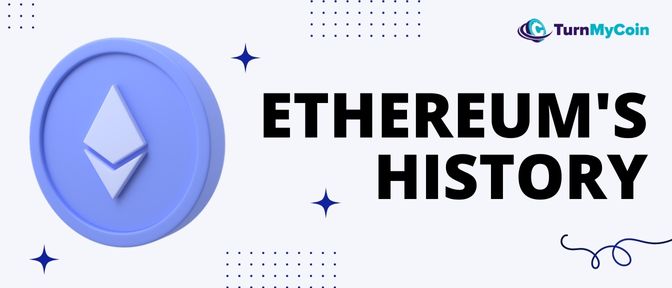
The second-largest blockchain project in the world, Ethereum, was sometimes different. Vitalik Buterin co-founded the project as a response to Bitcoin’s flaws. The Ethereum white paper, written by Buterin and describing intelligent contracts (automating, immutable “if-then” statements), came in 2013.
It explains how smart contracts allow for the creation of decentralized applications. DApp development was already possible in the blockchain industry, but the platforms needed to be interoperable. Buterin wanted to bring them together with Ethereum Blockchain. To him, maintaining adoption required standardizing how DApps function and communicate.
As a result, Ethereum 1.0 came into the scenario.
Imagine it as Apple’s App Store: a single location where tens of thousands of unique applications that adhere to the same standards can be seen. Only that set of rules is hardcoded into the network and is autonomously enforced, with developers able to impose their own restrictions within DApps. There are only so many entities changing and enforcing laws like there are with Apple. Instead, the community’s members hold power.
Naturally, creating such a network is costly
Therefore, Buterin and his co-founders Gavin Wood, Jeffrey Wilcke, Charles Hoskinson, Mihai Alise, Anthony Di Iorio, and Amir Chetrit held a token presale to raise $18,439,086 in ether, funding Ethereum’s current and future developments.
The group also established the Ethereum Foundation in Switzerland to preserve and expand the network. However, soon after, Buterin decided to run the foundation as a nonprofit, leading to some co-founders’ departure.
Over time, developers who had their decentralized concepts came to Ethereum. In 2016, these users established The DAO, a democratic organization that cast votes on proposals and changes to the network.
The company did not require a CEO with executive authority over Ethereum because an intelligent contract supported it. However, changes had to be approved by a majority to be put into effect.
How does Ethereum operate?
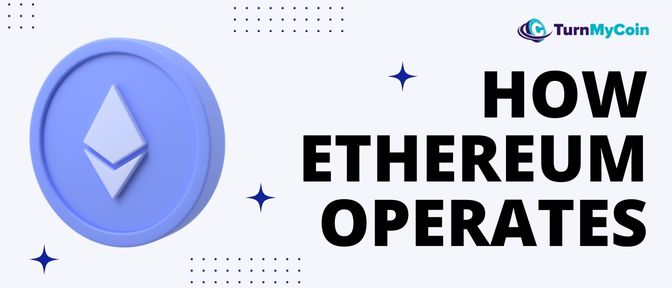
The Ethereum network, like Bitcoin, runs on thousands of computers worldwide because users act as “nodes” rather than a single central server. As a result, the network is decentralized, extremely resistant to attacks, and impervious to failure. In addition, thousands of other computers support the web, so it doesn’t matter if one crashes.
Ethereum operates a computer called the Ethereum Virtual Machine (EVM), which is essentially a single decentralized system. Any interactions must be verified so everyone can update their copy because each node has a copy of that computer.
The Ethereum blockchain stores network interactions as “transactions,” representing data within blocks. Miners validate these blocks as a digital ledger or transaction history before committing them to the network. A proof-of-work (PoW) consensus method is mining to verify transactions.
A distinct 64-digit code identifies each block. The code’s uniqueness is demonstrated by miners who devote their computer resources to finding it. Their computing power serves as “proof” of that labor, and miners are compensated in ETH for their efforts.
Ethereum transactions are entirely public
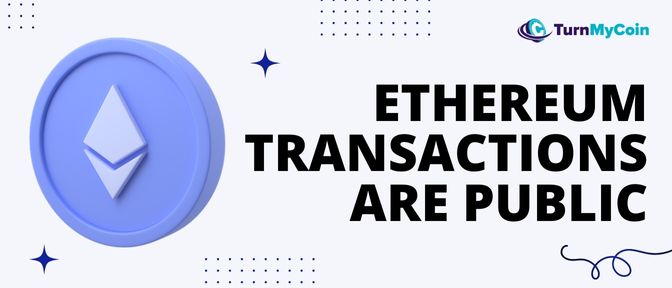
Additionally, all Ethereum transactions are entirely public, just like Bitcoin. As soon as a block is complete, miners broadcast it to the rest of the network to confirm the change and add it to everyone’s copy of the ledger. Confirmed blocks are a perfect record of all network transactions because they cannot be altered.
Each transaction has a fee called “gas,” which is paid by the user initiating the transaction. Where does that ETH come from if miners are paid for their work? To encourage additional mining and maintain network security, that fee is paid to the miner who validates the transaction. In a way, the gas acts as a cap, limiting the number of operations a user can perform in a single transaction. Additionally, it serves to prevent network spam.
Because ETH is more of a utility token than a token of value, there is no end to its supply. Ether regularly enters the market as miner rewards, and once the network switches to proof-of-stake (PoS), it will also do so as staking rewards. Ether should never lose value beyond use due to inflation since there will always be a market.
Unfortunately, depending on the activity on the network, Ethereum gas fees are high. This is because each block has a limited amount of gas, which varies according to the kinds and quantities of transactions. Because miners will select the transactions with the highest gas fees, users will compete to validate transactions first. This drives the prices up and slowers the network during peak time.
Ethereum 2.0
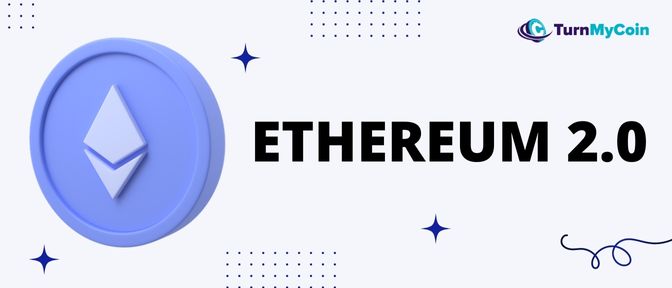
Despite being a major issue, network congestion is being addressed in Ethereum 2.0, a major redesign that will be covered in a separate section. This uses Proof of Stake consensus mechanism and is Energy efficient.
What is Ethereum’s purpose?
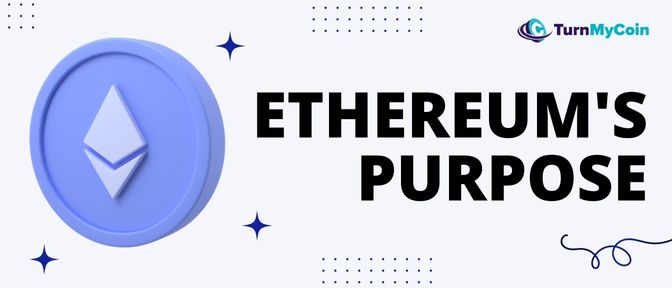
The Ethereum network’s greatest accomplishment has likely been decentralized finance. DApps that are multi-functional within the ecosystem first appeared around 2019 to 2020 and are becoming increasingly well-known daily.
DApp usage will increase along with the usage of the Ethereum network. The largest DeFi community exists on Ethereum; over time, popular DApps have raised awareness of the platform.
Nonfungible tokens, or NFTs, are a popular way for artists to publish their work on the blockchain and earn millions of dollars. Collectors want ownership, which answers the question of why purchase digital art when one can screenshot it.
Additionally serving as a secure form of storage, NFTs hold proof of ownership. It’s easy to understand the appeal because it essentially offers everything a collector could want.
Even if a copy is identical to the original, one would still prefer the original “Mona Lisa” for the same reason. In online games, NFTs also stand in for consumable items and accessories. Players can use the one-of-a-kind items created by artists to customize their homes and playable characters, adding yet another source of income for artists.
Ethereum Blockchain’s Advantages
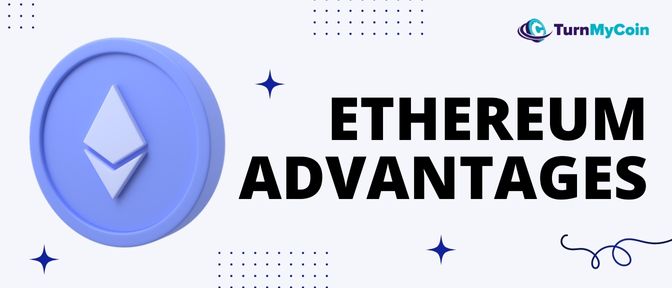
Ethereum Blockchain has many advantages besides decentralization and anonymity, like freedom from censorship. For instance, Twitter has the right to remove offensive tweets and punish the offending user. However, on an Ethereum-based social media platform, that can only occur if the community votes to do so. Users with various points of view can converse as they see fit in this way, and the public can decide what should and shouldn’t be said.
Also preventing bad actors from taking control are community requirements. Someone with bad intentions would need to hold 51 percent of the votes to change the network, which is typically very difficult. However, it is much safer than a straightforward server that can be compromise.
Then there are smart contracts, which on the conventional web automate a lot of the operations previously carried out by central authorities. To find clients and establish payment agreements, a freelancer on a platform like Upwork must use that platform.
Ether acquisition is also becoming more straightforward than ever. Businesses like PayPal and its Venmo subsidiary enable buying cryptocurrency with fiat money directly within the application. Since each platform has millions of users, they will inevitably participate sooner rather than later.
Ethereum Blockchain’s Disadvantages
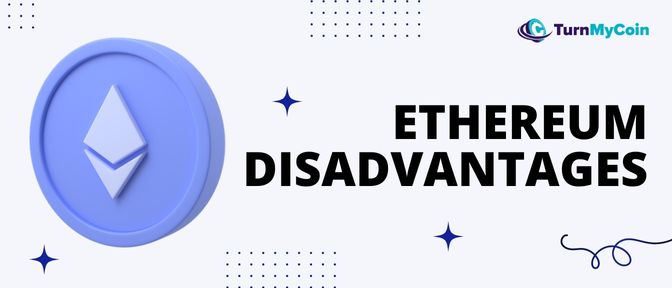
Ethereum Blockchain has a few major problems that still need to be resolved, despite sounding like the ideal platform.
Scalability is the first. Buterin envisioned Ethereum Blockchain as the current web, with millions of users interacting simultaneously. Due to block validation times and gas costs, this interaction is constrained by the PoW consensus algorithm. Decentralization also poses a problem. Everything is controlled by Visa, which streamlines transactions.
The second factor is accessibility. For users who need to become more familiar with its technology, Ethereum is currently expensive to develop on and to challenge to use. In addition, specific platforms demand particular wallets, so one must transfer ETH from their current wallet to the required wallet.
Again, for users accustomed to the current financial ecosystem, that step is unnecessary and in no way beginner-friendly.
Although PayPal is adding support for cryptocurrencies, users can only hold their money in the account. To meaningfully increase accessibility, the platform must integrate with DeFi and DApps.
The platform does have some excellent documentation on the subject, which is another essential strategy for increasing user numbers. However, there needs to be some streamlining in the actual use of Ethereum. It’s very different from using blockchain to learn about it.
